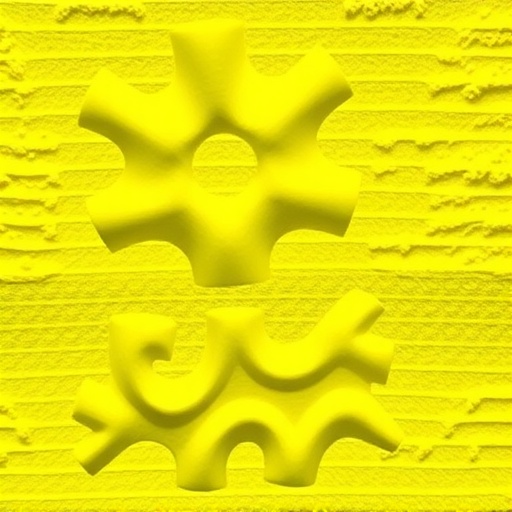Title: The Dynamic Transformation of Pumice: Insights into Granular Flow Mechanics
Recent research has unveiled important insights into the behavior and transformations of pumice during granular flow, significantly contributing to our understanding of particulate matter dynamics. This study by Figueiredo and colleagues, published in Commun Earth Environ, showcases the intricate interplay between the physical properties of pumice and the dynamics of granular movement. Such revelations are crucial, considering the role of pumice in various geological and environmental processes.
To comprehend these transformations, it is essential to grasp what describes pumice. Pumice is a lightweight volcanic rock formed when volcanic lava with a high gas content cools and depressurizes rapidly. Its unique porous structure not only gives it a low density but also influences how it interacts with surrounding materials during transport. The study emphasizes that understanding pumice’s behavior is pivotal in the fields of geology, environmental science, and even hazard mitigation.
One of the intriguing findings from this research is how pumice pieces undergo shape evolution as they move through granular flows. When pumice particles are subjected to the forces of flowing granules, collisions, and interactions, they can alter in shape and texture. This morphological change can impact how pumice disperses in the environment and interacts with other materials. The authors highlight that these changes are not merely incidental but rather integral to the overall dynamics of sediment transport and deposition.
The methodology employed in this study was robust, incorporating both experimental and computational approaches to simulate the conditions under which pumice experiences granular flow. By creating a controlled environment where pumice could be observed as it interacted with other materials, the researchers could precisely monitor changes in shape and size. This sophisticated interplay of techniques allowed for a deeper understanding of the mechanisms driving shape evolution in pumice.
Results indicated that the degree of shape change was influenced by various factors, including the initial particle size, flow velocity, and the density of the surrounding material. This prompts further inquiries into whether these interactions could have broader implications for sedimentary processes in natural environments, such as riverbeds or ocean floors, where pumice is commonly found. The findings lay important groundwork for future studies aiming to simulate natural conditions and explore long-term effects on pumice mobility and transformation.
Furthermore, the study projects potential implications beyond geological understandings. For instance, the dynamics revealed by the evolving shape of pumice could be paralleled with systems in engineering and materials science. In scenarios where lightweight and high-strength materials are needed, insights from pumice’s behavior could inspire novel designs in construction and manufacturing.
The research also opens avenues for investigating the ecological ramifications of pumice transformation. As pumice shifts and evolves within various environments, it can affect local biodiversity, nutrient cycling, and habitat formation. Exploring these consequences could provide critical insights into how volcanic materials contribute to ecosystem dynamics.
Moreover, the findings could furnish additional layers to understanding volcanic eruptions and their aftermath. Knowing how pumice tends to behave under certain conditions can help scientists better predict volcanic activity’s effects on surrounding ecosystems and landscapes. This, in turn, can influence disaster preparedness and environmental management strategies in regions prone to volcanic activity.
The implications of the research extend to education and public awareness as well. It emphasizes the importance of understanding geological processes that shape our natural world. By disseminating these findings through various channels, the researchers aim to enhance public engagement with earth sciences, fostering a greater appreciation for geological phenomena and their links to everyday life.
In addition to this informative angle, the study stimulates a conversation regarding the challenges in managing volcanic materials and their impacts on human activities. As pumice may become more accessible with advancements in mining and processing techniques, it raises questions about sustainable practices when dealing with such natural resources.
Looking toward the future, the study by Figueiredo and colleagues promises to ignite further investigations into the exploration of pumice and other volcanic materials regarding granular flow behaviors. By delving into how these materials interact dynamically, researchers can better elucidate the processes shaping our Earth.
Ultimately, it is the intersection of such studies that propels the field forward. Each bit of knowledge we gain about materials like pumice enriches our overarching understanding of earth systems, contributing value to both scientific discourse and real-world applications. Through collaborative efforts between geologists, material scientists, and ecologists, the narrative surrounding volcanic materials and their transformations will undoubtedly expand, yielding richer insights into our planet’s intricate workings.
Subject of Research: Shape evolution of pumice during granular flow
Article Title: Shape evolution of pumice during granular flow
Article References: Figueiredo, C., Kueppers, U., Pereira, L. et al. Shape evolution of pumice during granular flow. Commun Earth Environ 6, 941 (2025). https://doi.org/10.1038/s43247-025-02936-4
Image Credits: AI Generated
DOI: https://doi.org/10.1038/s43247-025-02936-4
Keywords: Pumice, Granular flow, Shape evolution, Volcanic materials, Environmental science, Sediment transport, Geological processes.




